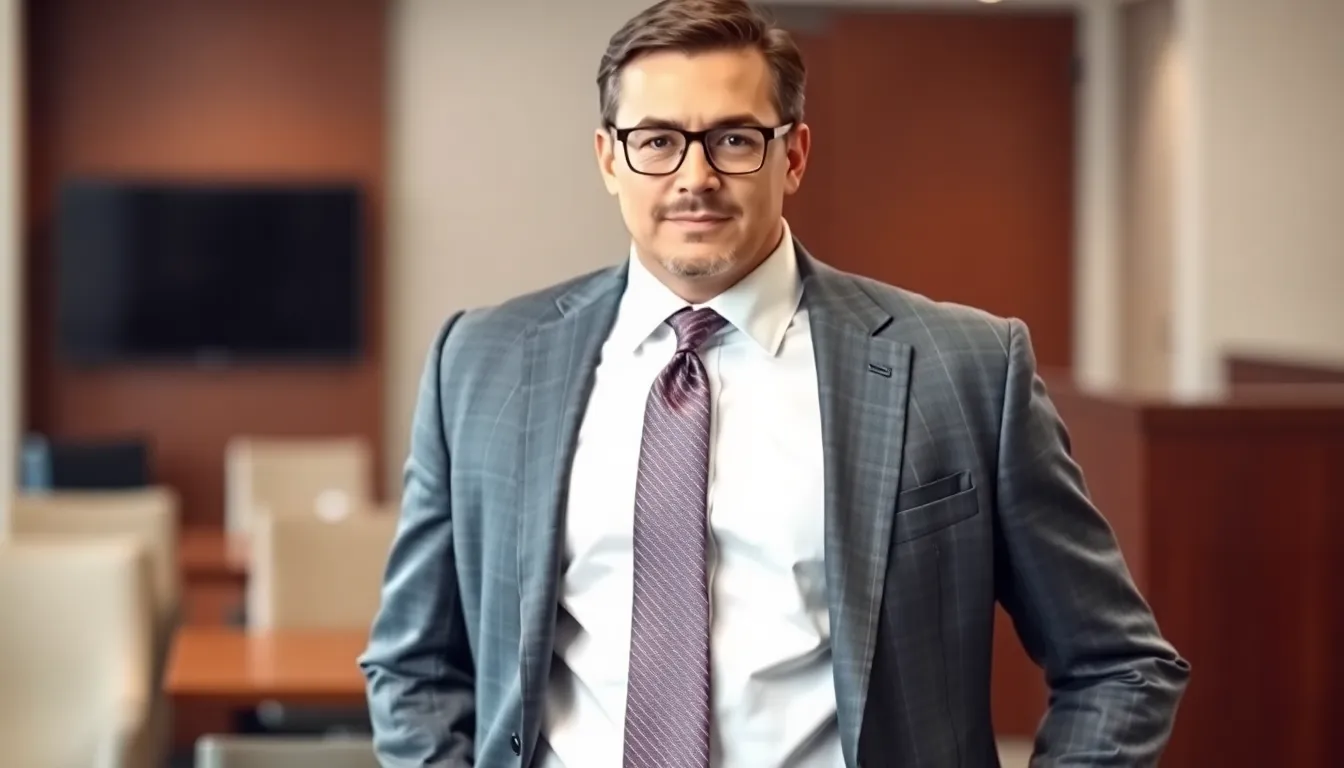When it comes to formal wear, men often find themselves in a style conundrum. It’s like choosing between a tuxedo and a superhero costume—one makes you look sharp while the other might just get you kicked out of the event. The right outfit can transform a simple gathering into an unforgettable occasion, so why settle for bland when you can dazzle?
From tailored suits that scream sophistication to accessories that add just the right amount of flair, formal men’s wear isn’t just about looking good. It’s about making a statement without uttering a word. Whether he’s attending a wedding, a business meeting, or a black-tie gala, he needs to know how to navigate the world of formal fashion. So, let’s dive into the essentials of formal men’s wear and help him step out looking like the best-dressed man in the room.
Formal Men Wear
Formal men wear encompasses attire designed for significant occasions, focusing on style, quality, and appropriateness. It’s essential to recognize the various elements that make up this category of clothing.
Definition of Formal Wear
Formal wear includes tailored suits, dress shirts, ties, and dress shoes. Fabrics like wool, silk, and cotton contribute to quality, enhancing comfort and appearance. Attire choices often depend on the event, with black-tie, white-tie, and business formal being common categories. Black-tie events typically require a tuxedo, while business formal might favor a well-fitted suit. Accessories, such as cufflinks and belts, play a crucial role, rounding out the outfit’s sophistication.
Importance of Dressing Formally
Dressing formally impacts perceptions and can influence social and professional interactions. Improved confidence emerges from wearing appropriate attire, enhancing overall presentation. Formal clothing serves as a visual cue that signals respect for the occasion and audience. First impressions are paramount, especially in job interviews and formal gatherings. Appropriate formal wear also reflects personal taste and character. Dressing well allows individuals to stand out gracefully in a crowd, making quality choices paramount.
Types of Formal Men Wear

Formal men wear includes various styles tailored for significant occasions, ensuring a polished appearance. Understanding the types of formal attire elevates one’s wardrobe choices.
Suits
Suits form the foundation of formal men’s attire. Tailored suits come in two or three pieces, featuring a jacket and matching trousers. Fabrics like wool and linen provide both comfort and durability. Blazers add versatility, allowing pairing with dress trousers or chinos. Patterns such as pinstripes and checks offer style variety. Choosing the proper fit ensures a flattering silhouette, contributing to a refined look.
Dress Shirts
Dress shirts complement suits and enhance overall style. Classic white shirts serve as staples, while colors like light blue or lavender add subtle flair. Fabrics such as cotton provide breathability and comfort, ideal for longer wear. Collars range from spread to point, influencing the shirt’s formalness. Fitted options create a streamlined appearance, while tailored cuts ensure versatility for various suit styles.
Ties and Bow Ties
Ties and bow ties add sophistication to formal attire. Silk ties come in solid colors and intricate patterns, making them suitable for diverse occasions. Bow ties, while often seen at black-tie events, also work well for a creative touch. Neckties should coordinate with suits and shirts, ensuring harmony in color and pattern. Selecting the appropriate knot style can also impact the overall impression.
Formal Footwear
Formal footwear plays a crucial role in completing a polished look. Oxford shoes stand as a classic choice, known for their sleek design. Brogues offer a slightly more decorative option, featuring perforated patterns. Leather quality significantly affects comfort and longevity, so investing in high-quality materials pays off. Shades like black or brown align with various suit colors, providing flexibility for different looks. Properly polished shoes enhance the overall appearance and reflect attention to detail.
Choosing the Right Formal Attire
Choosing formal attire involves careful consideration of several critical factors. Understanding fit, fabric, and color enhances the ability to select the perfect ensemble for any occasion.
Fit and Tailoring
Fit affects overall appearance and comfort. A well-fitted suit enhances body shape while projecting confidence. Tailoring adjusts sizes, ensuring suits accentuate the wearer’s best features. Considerations include adjusting sleeve length, waist suppression, and pant tapering. Ill-fitting clothing distracts from the overall look, diminishing a polished impression. Focus on the shoulders, chest, and waist for optimal tailoring. Proper investment in a tailor transforms a standard suit into a custom masterpiece.
Fabric Choices
Fabric plays a significant role in both aesthetics and comfort. Wool remains a primary choice, offering breathability and durability. Silk, often used for ties or linings, adds luxury to formal wear. Cotton suits, though less formal, provide comfort during warmer months. Explore blends that combine qualities for a versatile option suitable for various occasions. The choice of fabric impacts the suit’s drape and feel against the skin. Prioritize high-quality materials to ensure longevity and a refined appearance.
Color Selection
Color selection significantly influences style and appropriateness. Classic shades like navy, charcoal, and black provide versatility for formal settings. Lighter shades, such as gray or beige, suit daytime events well. Patterns like pinstripes or checks create visual interest without overwhelming the outfit. Thoroughly consider the occasion when choosing colors; some events may call for more muted tones, while others allow bolder choices. Accessories should harmonize with the jacket and trousers color for a cohesive look.
Maintaining Your Formal Wear
Proper maintenance of formal wear extends the life of the garments and keeps them looking pristine. Regular attention to cleaning and storage ensures outfits remain sharp and ready for any occasion.
Cleaning and Care Tips
Cleaning formal wear involves specific strategies. Dry cleaning suits regularly preserves fabric integrity, while spot cleaning minor stains can prevent permanent damage. Brushing garments with a soft brush eliminates surface dirt, maintaining a polished appearance. Following care labels for washing and pressing instructions helps avoid fabric shrinkage or distortion. Keeping shoes polished, with high-quality polish, enhances their longevity and appearance. Additionally, air out clothes after wearing to prevent odors.
Storage Recommendations
Storage practices affect the condition of formal wear. Utilizing breathable garment bags shields suits and dress shirts from dust and moisture. Hanging suits on padded hangers prevents shoulder bumps, preserving their shape. Folded dress shirts can be stored in drawers or boxes to maintain crispness. Avoid squeezing garments in tight spaces, as this can cause wrinkles and creases. Consider placing shoe trees inside dress shoes to maintain their structure and absorb moisture.
Conclusion
Choosing the right formal wear is crucial for making a lasting impression. A well-fitted suit paired with the right accessories can elevate any look. Understanding the nuances of fabric and color plays a significant role in achieving a polished appearance.

Men should prioritize quality and fit to ensure their attire not only looks good but also feels comfortable. Regular maintenance and proper storage will keep garments in top condition, allowing them to shine at every occasion. By following these guidelines, men can confidently navigate the world of formal fashion and present themselves with style and sophistication.




